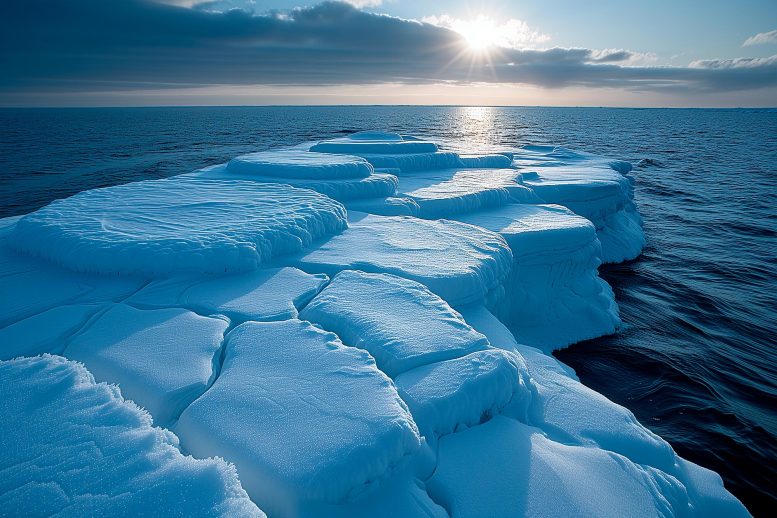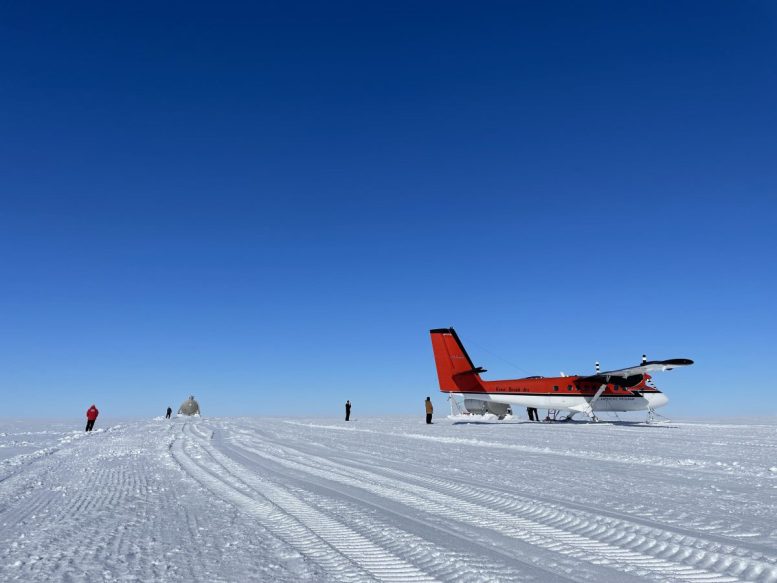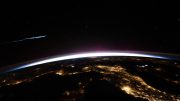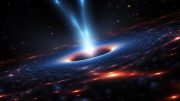
A 2023 study highlighted unexpected extreme cold events in Antarctica during a year of global heat records, emphasizing the need to understand such atmospheric anomalies for improved operational safety in the region. Credit: SciTechDaily.com
A 2023 study documented unprecedented cold spells in Antarctica, contrasting sharply with global heat records and underscoring the complexity of climate patterns.
Although 2023 was marked by record-breaking global temperatures, it also witnessed unusual extreme cold events in Antarctica. A recent study published in the scientific journal Advances in Atmospheric Sciences highlights the intense cold spells that occurred on the continent during the late winter months of July and August.
In a detailed examination of the late winter months of 2023, researchers observed extreme cold temperatures across a broad region of Antarctica.
“Record cold temperatures were observed in our Automatic Weather Stations (AWS) network as well as other locations around the region,” said Matthew A. Lazzara of the Antarctic Meteorological Research and Data Center at the University of Wisconsin-Madison (UW-Madison). “These phases were marked by new record low temperatures recorded at both staffed and automatic weather stations, spanning East Antarctica, the Ross Ice Shelf, and West Antarctica to the Antarctic Peninsula.”

The United States Antarctic Program fuel cache in the middle of the Ross Ice Shelf, located off the South Pole Traverse Road that connects McMurdo Station to South Pole Station. Credit: Picture taken 19 Dec 2023 by David Mikolajczyk
“The highest point, Kunlun Station, recorded its lowest temperature ever observed at -79.4°C, which was about 5°C lower than the monthly average,” added Prof. Minghu Ding from State Key Laboratory of Severe Weather at the Chinese Academy of Meteorological Sciences. “Interestingly, at the same time, record-breaking high temperatures were occurring in South America, which is relatively close to Antarctica.”
In Chile, temperatures soared close to 40°C (104°F), while Rio de Janeiro broke a 117-year-old heat record.
Analyzing Cold Phases
So what did the researchers find out? Is Antarctica sending mixed climate messages?
The study identified four distinct cold phases from mid-July to the end of August 2023.
An analysis of 500-hPa geopotential height anomalies revealed strong negative anomalies in August 2023. This mid-tropospheric atmospheric environment played a crucial role in the observed extreme cold temperatures. The research suggests that both southerly flows from the continent and calm atmospheric conditions contributed to these cold spells.
With temperatures plummeting below -50°C, essential flight operations to key research stations were severely disrupted. These temperatures risked hydraulic failure and fuel gelling in aircraft, rendering safe flights impossible.
“These extreme cold events were unprecedented and had significant operational impacts,” said David E. Mikolajczyk, the corresponding author of the study. “Understanding these conditions helps us better prepare for future challenges in Antarctic logistics.”
This study, conducted by a team of international scientists, underscores the importance of understanding atmospheric environments that lead to extreme cold temperatures. Their findings are vital for improving the safety and efficiency of Antarctic operations.
AWS observations from the UW Madison Antarctic Meteorological Research and Data Center (AMRDC) AWS program and State Key Laboratory of Severe Weather AWS program were primarily used for event analysis.
Reference: “Extreme Antarctic Cold of Late Winter 2023” by Anastasia J. Tomanek, David E. Mikolajczyk, Matthew A. Lazzara, Stefano Di Battista, Minghu Ding, Mariana Fontolan Litell, David H. Bromwich, Taylor P. Norton, Linda M. Keller and Lee J. Welhouse, 13 June 2024, Advances in Atmospheric Sciences.
DOI: 10.1007/s00376-024-4139-1









“Is Antarctica sending mixed climate messages?”
I think the message being sent is that the science is NOT settled, despite the claim by Obama and others.
And that’s why they changed the buzzword from “global warming” to “climate change” a decade ago, and have been experimenting with “climate emergency” from time to time. Got to keep that scare alive.
When scientists use language that doesn’t tow the party line, it’s called an anomaly. When it does it’s called climate change
These comments are great examples of familiarity masquerading as understanding.
Your comment is a great example of pontification masquerading as wisdom. What evidence can you present that your understanding is better than mine? You present no facts or logic by which to judge your aphorism.
Not pontification, just frustration. Most of the time it makes no difference in forums like this, but I have a PhD in Meteorology. Before retirement, I worked in general circulation model (GCM) applications, including climate, since the early 1970s. I have seen the general consensus on anthropogenic climate change over time go from where about ¾ of those in the field accepted it to where it’s now pretty close to 100 %.
A long time ago I gave up trying to lay out the evidence. I found that after going to all that trouble, the response was “Pfft!”. I attribute this kind of dismissive reaction to a lack of understanding of how the scientific method and peer review process works, and a lack of appreciation for the rigor invested in publishing scientific papers. Regardless, I’ve now gotten to where I suggest they educate themselves, starting with a course on climate science at a local college.
The problem with your “science” is that your sampling is severely lacking both historically and geographically, you’re conflating correlation with causation, and you’re relying solely on GIGO computer models as a “method”. And why are they GIGO? Because you pretend to know all the variables and coefficients that are supposed to go into them, but you don’t.
You represent yourself as knowledgeable about geophysical modeling. How am I “conflating” correlation with causation? What variables am I missing? Be specific.
Also, the “nearly 100% consensus” is a blatant lie. I’ve read the Cook’s paper that came up with that number – it’s a God damn forgery. A peer reviewed forgery.
Luckily, the retraction machine is picking up steam in the scientific community. Nearly 100% of the “findings” in the climate “science” are bound to eventually get wiped out.
What retraction machine? Among the literally thousands of papers published in dozens of different scientific organizations, what particular papers of substance have been retracted? You are speaking in political terms, not scientific terms.
OMG. Its simple. Heat Rises cold falls. The hotter the temp the higher goes. The higher it goes the colder it gets. This a simple thermal engine. The high flow of melt water is part of the equation in cooling. Dont sweat the co2 as much as the micro plastic that both holds and Strafifies heat. This is the nail the hydrocarbons have been here in one form or another since the dawn of time. Polymers on other have not. Occam’s razor.
You make way more sense than JohnK fella there.